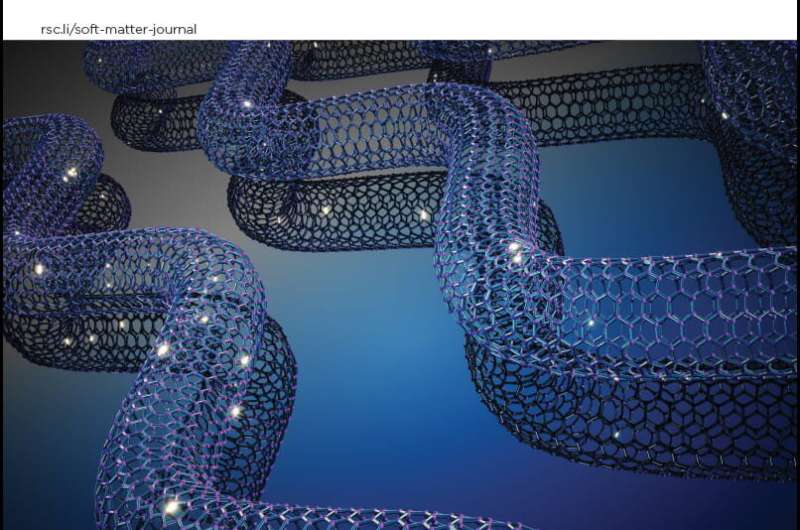Molecular jiggling has implications for carbon nanotube fibers

New research suggests the jiggling motion of carbon nanotubes suspended in liquid solutions could have implications for the structure, processing and properties of nanotube fibers formed from those solutions.
Carbon nanotubes—hollow, atom-thick tubes of pure carbon—can already be formed into fibers stronger than steel and as conductive as metals, and Rice's Carbon Hub is exploring ways to reduce greenhouse gas emissions by substituting carbon nanotube fibers for metals and other emission-intensive materials. Fibers are spun from liquid solutions of nanotubes.
Researchers from Rice, the Technion—Israel Institute of Technology and Eindhoven University of Technology found jiggling motions caused nanotubes to repel one another and align in solutions with low concentrations of nanotubes. In high-concentration solutions, nanotube jiggling imparted additional order.
The research is published online and featured on the cover of the May 28 issue of the Royal Society of Chemistry journal, Soft Matter.
More information: Vida Jamali et al, Enhanced ordering in length-polydisperse carbon nanotube solutions at high concentrations as revealed by small angle X-ray scattering, Soft Matter (2021).
Journal information: Soft Matter
Provided by Rice University





















